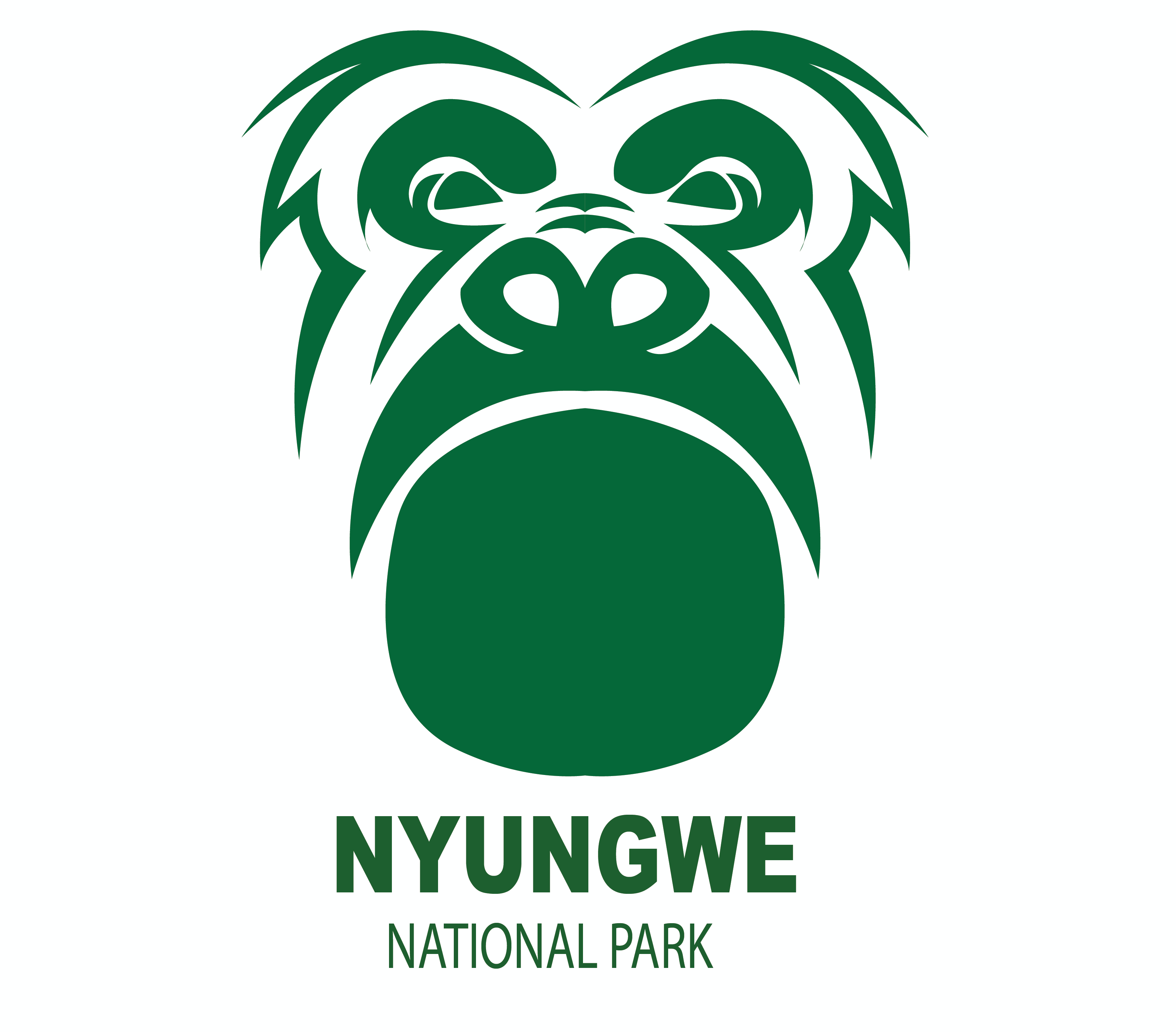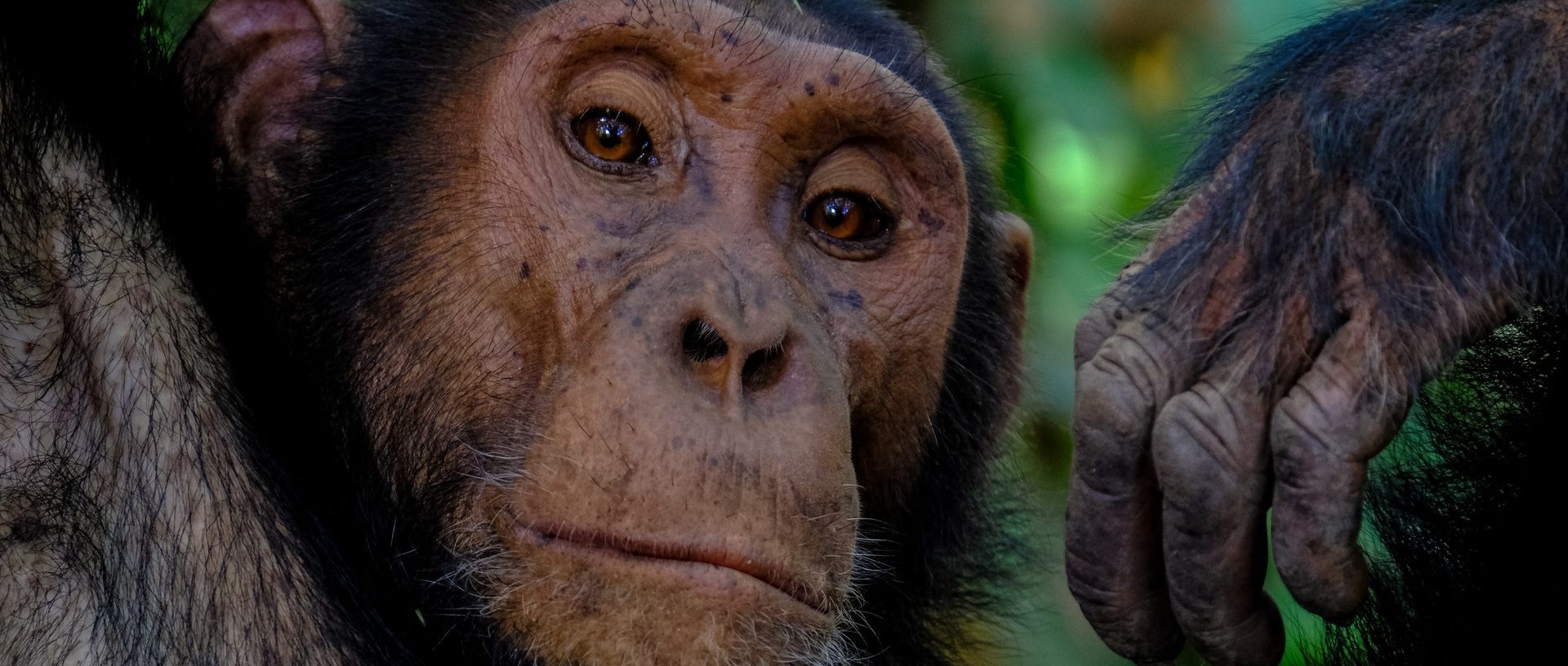Where to stay in Queen Elizabeth National Park
Luxury accommodation in Queen Elizabeth National Park
KYAMBURA GORGE LODGE
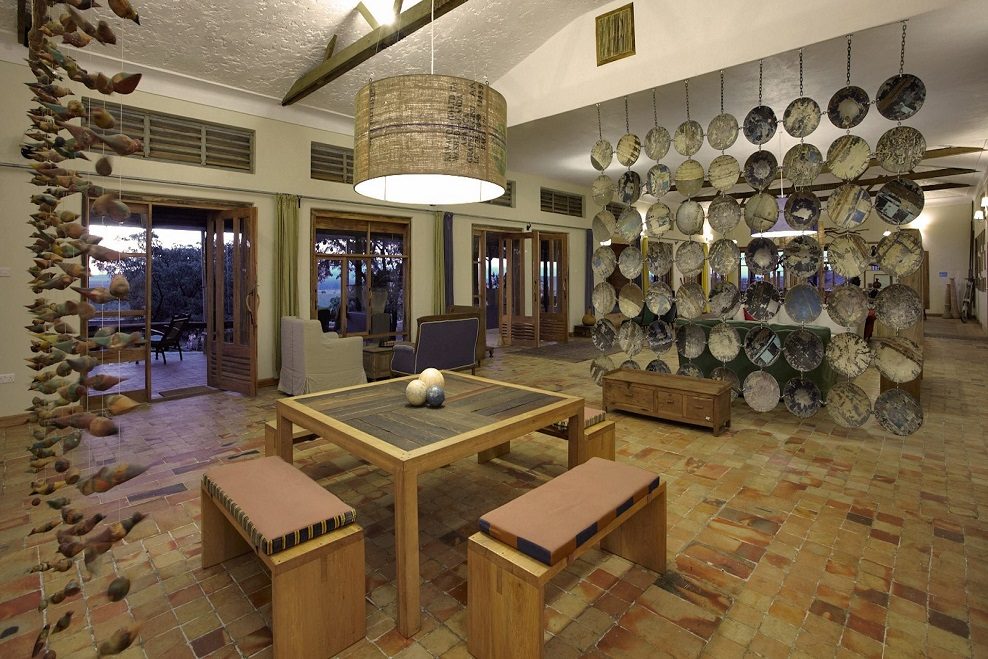
Classic accommodation in Queen Elizabeth National Park
TWIN LAKES SAFARI LODGE
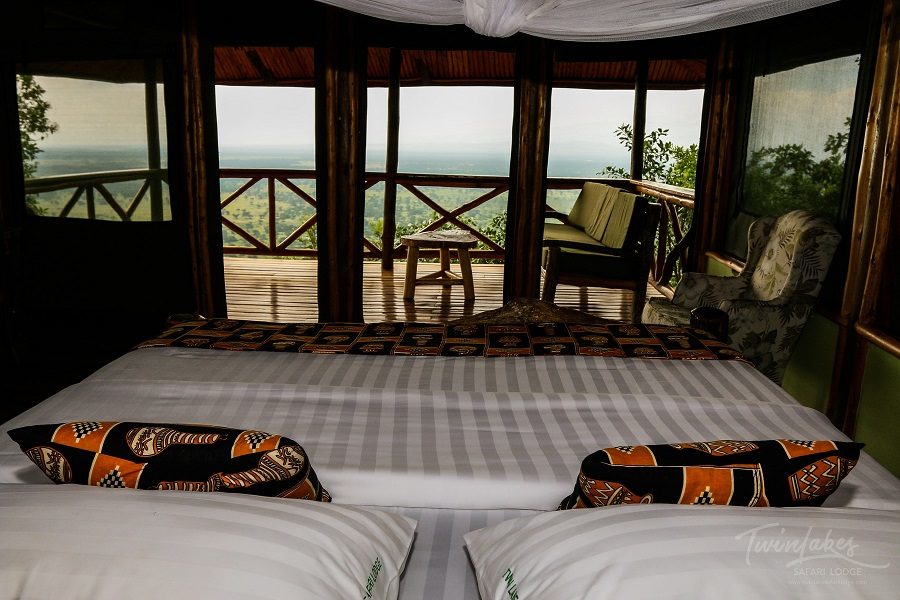
What to do in Queen Elizabeth National Park
Chimpanzee tracking
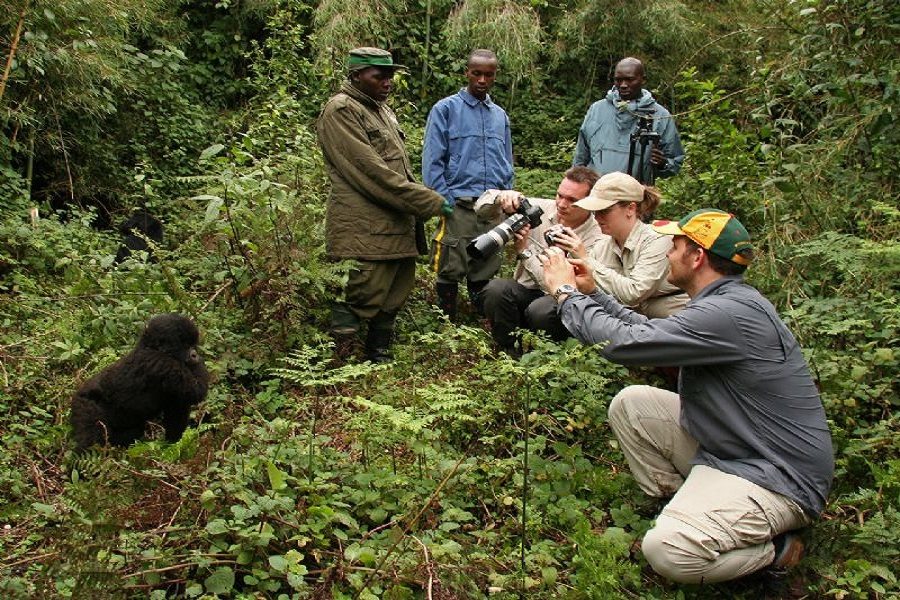
Tracking chimpanzees in their natural habitat, as they swing from the branches in the canopy high above the forest floor is nothing short of exhilarating. The chimps effortlessly cross and scamper through the trees above the gorge, and visitors on the other hand must cross the river using natural bridges in order to keep up with the chimps. So although the walk usually lasts only 2–3 hours, descending the steep gorge and crossing the log bridges over the river requires some agility and fitness.
Chimpanzee tracking is also available in nearby Kalinzu, a forest reserve 30 minutes drive from Kyambura Gorge Lodge where there is a community of about 40 habituated chimpanzees.
Game drives in Queen Elizabeth National Park
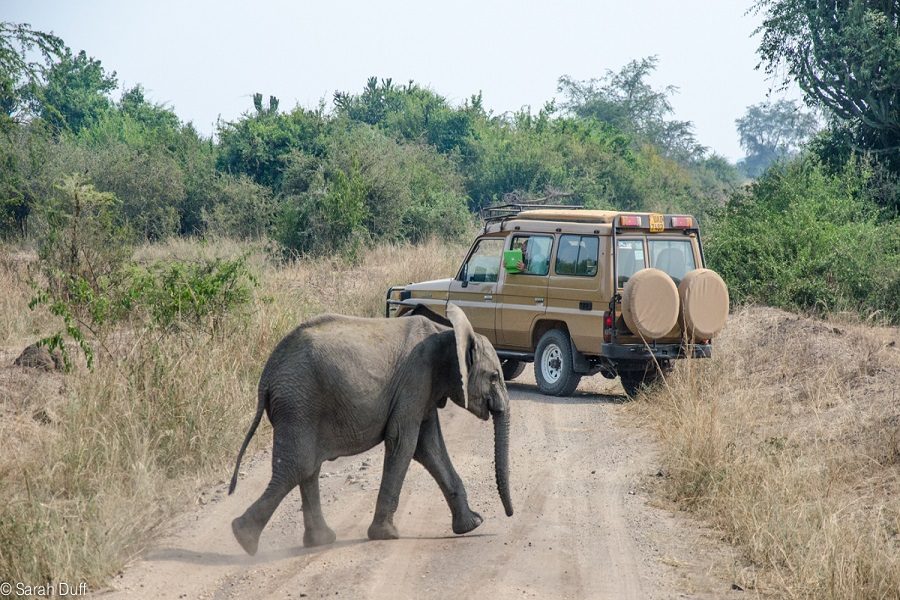
Queen Elizabeth National Park is considered to be one of Uganda’s most varied and most beautiful protected areas. Queen, as she is affectionately known, is home to two of Africa’s big cats, the majestic lion and the elusive leopard. Kyambura Gorge Lodge guests can explore the plains of Queen Elizabeth Park in Uganda on a variety of game drives, usually at dawn and dusk. It is when daylight hours are coolest that wildlife is most active.
Boat cruise on Kazinga channel
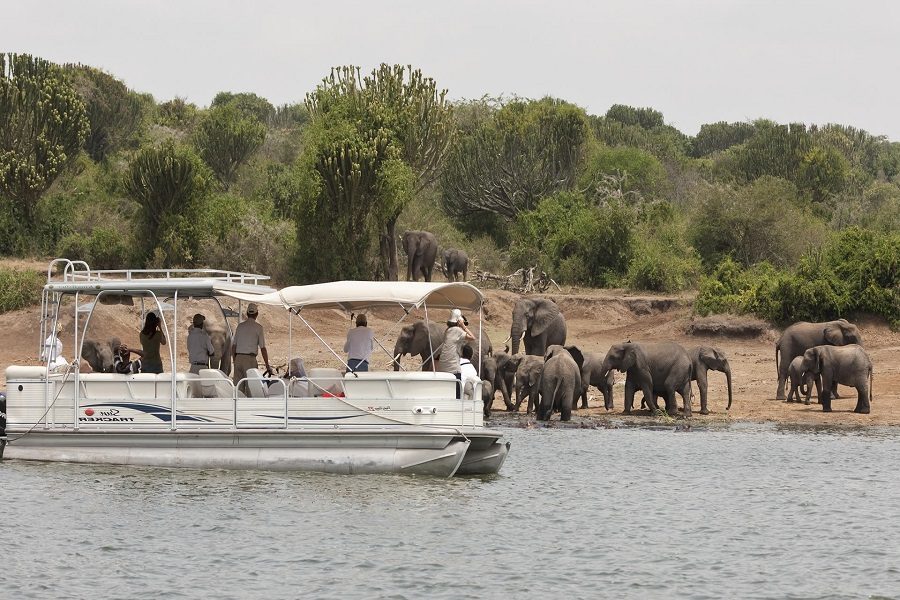
The Kazinga Channel is a 32-kilometer long channel, rich in wildlife that links Lakes Edward and George. Boat trips down the channel depart from Mweya Safari Lodge (about an hour’s drive through the park from Kyambura Gorge Lodge) and last 3-4 hours. The boat cruise provides a wonderful opportunity to photograph the many animals that come to cool off at the waters’ edge, including lion, buffalo, hippo, elephant, and leopard.
Tree climbing lions
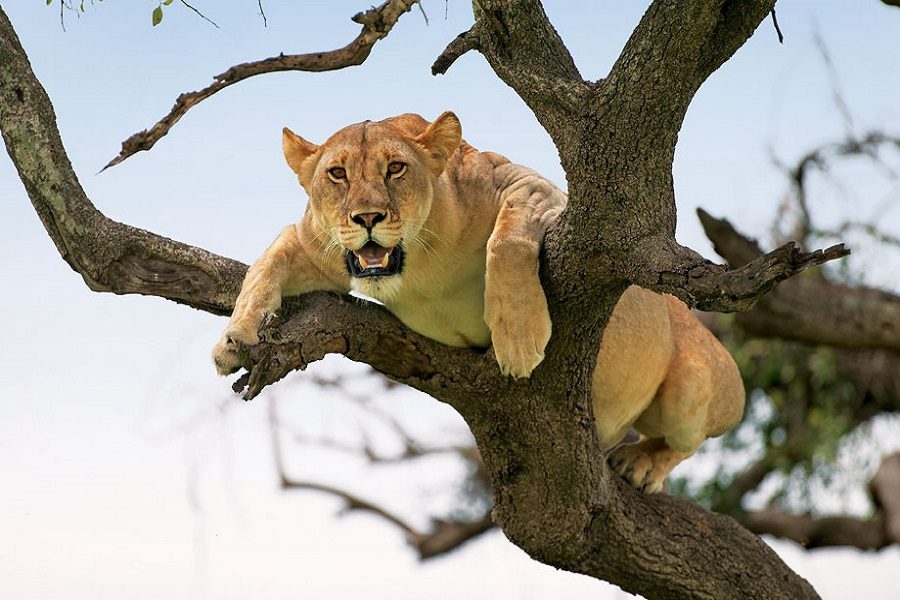
It is highly uncommon for lions to actually climb trees. In fact, there is only one subspecies known to climb trees regularly, and one of the two populations of these subspecies can be found in Ishasha, in the southern sector of Queen Elizabeth National Park. Finding a pride lounging on the branches of one of the many fig trees in the park is considered to be one of the highlights of visiting the park.


